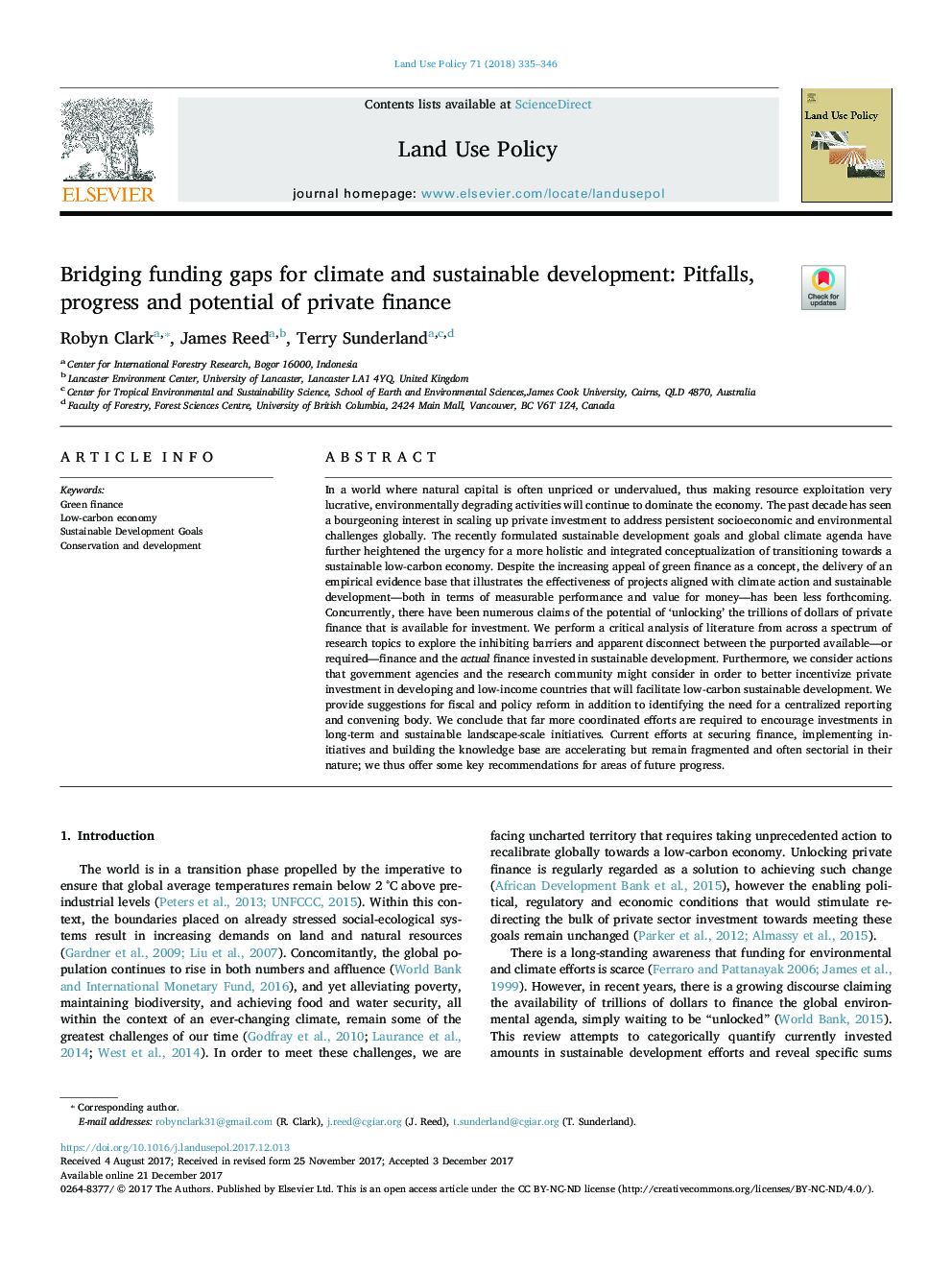| Article ID | Journal | Published Year | Pages | File Type |
|---|---|---|---|---|
| 6546645 | Land Use Policy | 2018 | 12 Pages |
Abstract
In a world where natural capital is often unpriced or undervalued, thus making resource exploitation very lucrative, environmentally degrading activities will continue to dominate the economy. The past decade has seen a bourgeoning interest in scaling up private investment to address persistent socioeconomic and environmental challenges globally. The recently formulated sustainable development goals and global climate agenda have further heightened the urgency for a more holistic and integrated conceptualization of transitioning towards a sustainable low-carbon economy. Despite the increasing appeal of green finance as a concept, the delivery of an empirical evidence base that illustrates the effectiveness of projects aligned with climate action and sustainable development-both in terms of measurable performance and value for money-has been less forthcoming. Concurrently, there have been numerous claims of the potential of 'unlocking' the trillions of dollars of private finance that is available for investment. We perform a critical analysis of literature from across a spectrum of research topics to explore the inhibiting barriers and apparent disconnect between the purported available-or required-finance and the actual finance invested in sustainable development. Furthermore, we consider actions that government agencies and the research community might consider in order to better incentivize private investment in developing and low-income countries that will facilitate low-carbon sustainable development. We provide suggestions for fiscal and policy reform in addition to identifying the need for a centralized reporting and convening body. We conclude that far more coordinated efforts are required to encourage investments in long-term and sustainable landscape-scale initiatives. Current efforts at securing finance, implementing initiatives and building the knowledge base are accelerating but remain fragmented and often sectorial in their nature; we thus offer some key recommendations for areas of future progress.
Related Topics
Life Sciences
Agricultural and Biological Sciences
Forestry
Authors
Robyn Clark, James Reed, Terry Sunderland,
